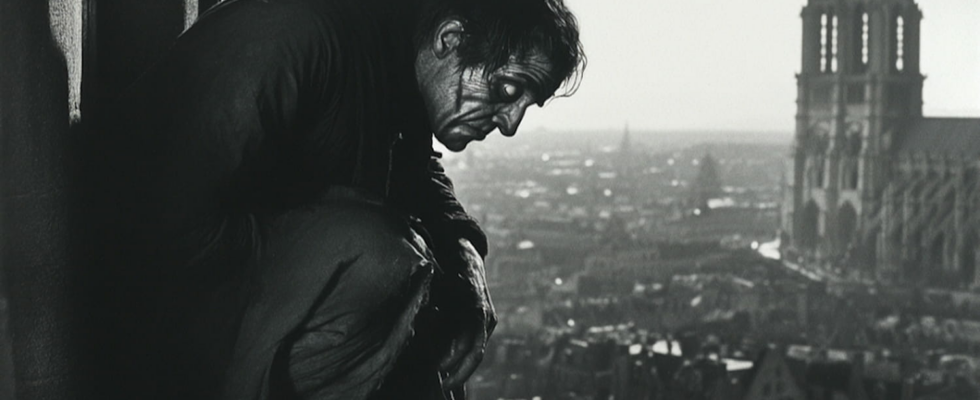The Hunchback of Notre-Dame by Victor Hugo could be inspired by a real cathedral worker.
The Hunchback of Notre-Dame owes his reputation to Victor Hugo. Quasimodo is the Parisian church bell ringer in the novel. He is distinguished by these physical characteristics: “This tetroid nose, this horseshoe mouth, this small left eye obstructed by a bushy red eyebrow while the right eye completely disappeared under an enormous wart, these disordered, chipped teeth here and there, like the battlements of a fortress”, is described by the author. The adaptation by Disney Studios in 1996 further expanded the character’s popularity. That being said, is it purely fiction? Well apparently not. It would be inspired by a worker who existed.
A London archivist from the Tate Gallery, Adrian Glew, discovered the memoirs of Henry Sibson, an English sculptor who participated in the renovation of the cathedral in the 1820s after the damage caused by the French Revolution. In this story, he evoked a rather solitary French man, like the hero of Victor Hugo, but he was not a bell ringer at Notre-Dame but a sculptor.

This man had a physical peculiarity which would have earned him the nickname “Monsieur le Hunchback”. He is described by Henry Sibson as “a state sculptor” who “was hunchbacked and did not like to mix with simple stonemasons”. The author explained that he had not had much contact with him and therefore had “forgotten his name”.
Victor Hugo, living in the Paris region, had, at that time, closely followed the construction site of Notre-Dame in order to write his novel, which came out in 1831. He could then very well have met this “Monsieur hunchback” or hear less indirectly about him, before taking inspiration from him for his character. “When I saw the references to the hunchbacked sculptor of Notre-Dame and saw that the dates corresponded to the time when Hugo was interested in the cathedral, the hairs on the back of my neck stood up and I decided to continue my research”, Adrian Glew told Daily Telegraph during its discovery.
Furthermore, a stonemason who would have worked with this “hunchback” is also mentioned and his name suggests that he too could have inspired Victor Hugo: his name was Trajan. However, in a first version of the Miserablethe protagonist Jean Valjean was named Jean Trajean.
